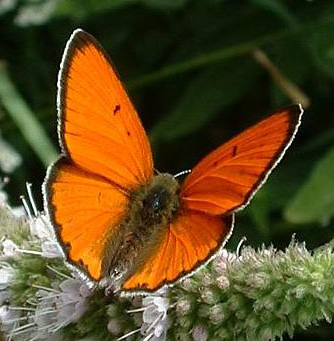Slowly, everything around is blossoming and coming to life. It is no surprise that Butterfly Day falls in the pre-spring, i.e., on 14 March, and today (March 20) is the beginning of astronomical spring.
The butterfly heralds a good harvest
As temperatures rise, the activity of these beautiful pollinators begins. It is thanks to butterflies, among other things, that we can enjoy a harvest of fruit and vegetables, as they greatly assist in their pollination.
Poland is home to more than 3100 species of these beneficial insects. Unfortunately, butterflies are decreasing year by year, mainly due to harmful human activities. Their future is under threat. According to scientists, as many as 40% of insects may soon become extinct. In Poland, almost half of all diurnal butterfly species require special care. Six butterfly species are critically endangered.
Why are butterflies threatened with extinction?
Intensification of the use of butterfly habitats is the main cause of the decline in populations of these insects. Mowing at inappropriate times is particularly fatal. Worse still, as a result of ploughing or the use of pesticides, the entire habitat can be destroyed.
Butterflies in Poland
The situation for Polish butterflies is somewhat better than in Western Europe. This can be evidenced by the national status of a number of so-called naturalized species, which are still quite numerous in Poland.

The best example is the Large copper. It frequently obccurs in our part of Europe and is not very demanding in terms of environmental needs. Poland is characterised by a high biodiversity of habitats, which has an excellent effect on many species. One can observe that there are more butterflies in south-eastern Poland than in north-western Poland. Of course, this is partly due to climatic and habitat conditions. It also appears that greater losses have been recorded in the western provinces, which can be linked primarily to farming.
Climate change and the impact on butterflies
Butterflies are ectothermic, which means that their body temperature is fully dependent on the surrounding environmental conditions. They are sensitive animals for whom every degree up or down makes a big difference.
A study led by the University of Cambridge shows that rising average temperatures, a consequence of climate change, pose a deadly threat to some species. Climate change is endured relatively well by large and bright butterflies because they can position their large reflective wings at the right angle towards the sun’s rays. In simple terms, their wings act as a protective insulating film. Consequently, they do not need to migrate in search of cooler microclimates.
At a disadvantage are the colourful butterflies, which have considerable problems adapting to higher temperatures because they do not have the aforementioned ‘protective film.’ Climate change is only exacerbating the problem, as we are seeing more and more extreme heat waves, as well as surprising weather phenomena.
Bees are not the only pollinators
Butterflies are a vital part of the ecosystem because, together with bees and other insects, they pollinate crops, doing the man a service worth billions.
Everyone can protect butterflies!
How can we help them? We should make our landscape more diverse, if only by not mowing our lawns. The tufts of grass left behind provide cool, shady shelter for many species of weaker butterflies.

